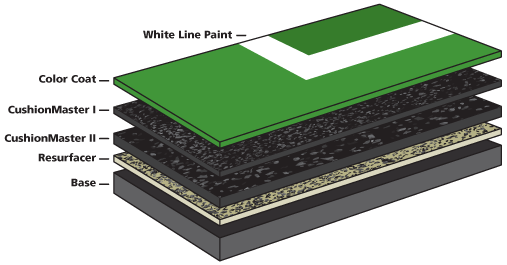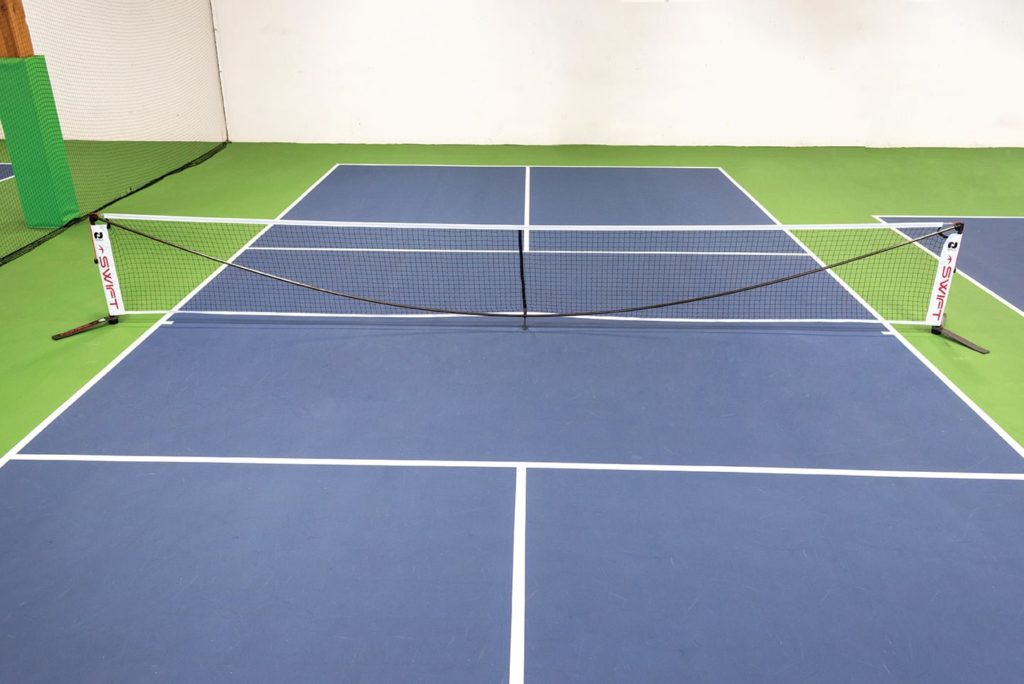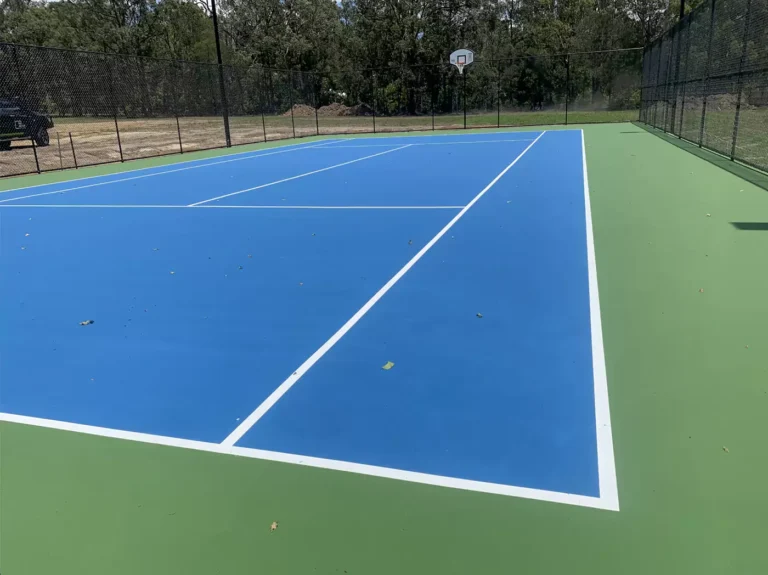Sustainable Practices in Pickleball Court Construction You Need To Know
As the popularity of pickleball continues to rise, so also does the requirement for sustainable methods in court building and construction. The effect of these practices prolongs far past the court itself.
Choosing Eco-Friendly Products
Selecting environment-friendly materials is a critical action in the building of sustainable pickleball courts. The option of lasting materials not only reduces environmental effect yet additionally enhances the long life and performance of the court. Trick products include reused rubber for the surface, which uses excellent longevity and shock absorption while diverting waste from land fills.
Furthermore, making use of locally sourced materials decreases transport exhausts and sustains local economic climates. Pickleball court construction. For example, utilizing native woods for fencing and seating can provide a lasting visual while ensuring resilience versus the components.
Integrating permeable products for court structures can better add to sustainability by enabling for natural water drain and decreasing drainage. These choices not just secure local environments yet also advertise much healthier play environments.
Reliable Drain Solutions
While the option of green materials is crucial, executing efficient drain options is just as essential for keeping sustainable pickleball courts. Correct drainage not only protects the court surface from water damage yet also lessens erosion and drainage, advertising ecological honesty.
Reliable drainage systems can include permeable paving, which permits water to penetrate the ground rather than pooling on the surface area. This lowers the chance of standing water, which can lead to mold and other maintenance issues. In addition, integrating tactically put water drainage networks and swales can guide excess water far from the court area, making sure a completely dry playing surface area and protecting against soil disintegration.
Making use of indigenous plants in the landscaping around the courts can additionally boost drain by absorbing excess water and minimizing drainage. These plants call for much less irrigation and promote biodiversity, lining up with sustainable techniques.
Additionally, it is essential to frequently keep the drain system to guarantee its long-term effectiveness. This consists of cleaning debris and tracking for obstructions. By prioritizing efficient drain remedies, pickleball court builders can considerably add to the sustainability and longevity of the center, inevitably benefiting both players and the atmosphere.
Energy-Efficient Lighting Options
As the need for pickleball proceeds to grow, integrating energy-efficient lights alternatives into court layout has become significantly vital for sustainability. Standard lights systems frequently take in extreme power, adding to higher functional expenses and ecological impact. Embracing contemporary, energy-efficient innovations is essential for both brand-new buildings and remodellings.
LED (Light Emitting Diode) illumination stands out as a premier choice due to its longevity and energy savings (Pickleball court construction). Contrasted to standard lights, LEDs utilize approximately 75% much less power and can last approximately 25 times longer, substantially minimizing upkeep costs. The directional nature of LED lighting reduces light pollution, making certain that lighting is focused on the court rather than surrounding locations.

Lasting Surface Area Alternatives
Exploring lasting surface area options for pickleball check here courts has actually acquired grip amongst gamers and builders alike. The emphasis on green materials not only lines up with the expanding environmental awareness however additionally improves the efficiency and sturdiness of the courts.
This material offers exceptional shock absorption, decreasing the threat of injuries for gamers while advertising sustainability. These ceramic tiles are very easy to mount and change, and their convenience enables for various court arrangements.
All-natural grass courts are additionally becoming a lasting choice, promoting biodiversity and minimizing the heat island result. They require regular upkeep and water, which may not straighten with all sustainability objectives.

Water Conservation Strategies

One more reliable technique entails the setup of rainwater harvesting systems. These systems collect and store rain for use in maintaining court surface areas and landscaping. This technique not just preserves drinkable water yet likewise reduces reliance on community sources.
Furthermore, utilizing drought-resistant landscape design around the courts is essential. Indigenous plants need much less water and are much better adapted to local environment problems, thus decreasing total water usage. In addition, utilizing efficient irrigation systems, such as drip irrigation, makes sure that water is provided directly to plant roots, reducing evaporation and waste.
Verdict
Integrating sustainable practices in pickleball court building and construction substantially contributes to environmental conservation and resource performance. Using environment-friendly products, implementing reliable drain options, and he said taking on energy-efficient lighting options can substantially decrease environmental effect. Discovering sustainable surface area options and using water preservation techniques improve the overall sustainability of these leisure centers. By focusing on these methods, the building of pickleball courts can straighten with broader environmental goals while promoting long life and performance within communities.
As the appeal of pickleball proceeds to rise, so also does the demand for sustainable practices in court building.Choosing eco-friendly materials is an important action in the building of lasting pickleball courts. By focusing on energy-efficient lights options, pickleball court producers can contribute to a more lasting future while fulfilling the needs of stakeholders and gamers alike.Including lasting surface choices not just improves the performance of pickleball courts yet additionally leads the way for carrying out reliable water preservation techniques.Including sustainable practices in pickleball court construction dramatically contributes to environmental conservation and resource performance.